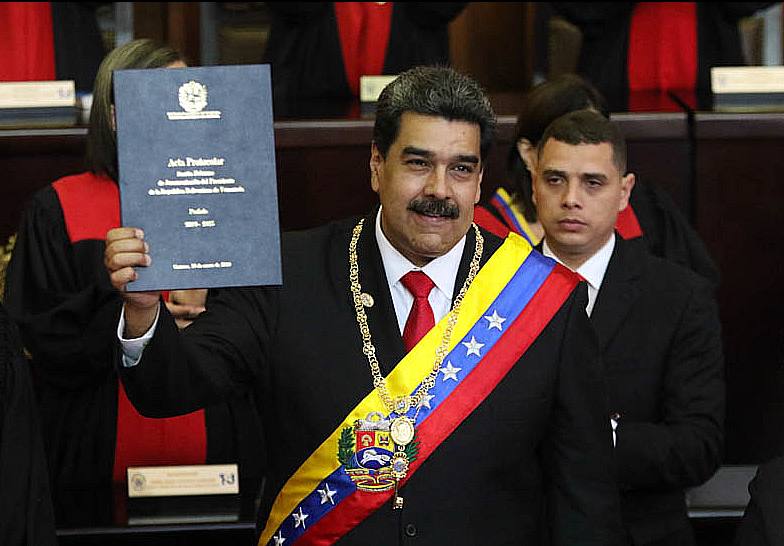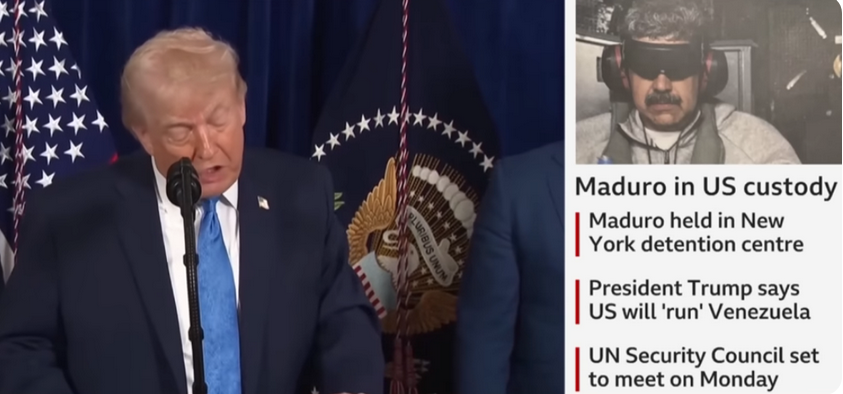Decades after the founding of the Organization of African Unity, now superceded by the African Union (AU), development for continent remains elusive
The world is confronted with serious challenges of backwardness, unemployment and underemployment, vulnerability, inequality, insecurity, exclusion, mass poverty and its offshoots of hunger, disease and illiteracy whose solution require an integrated multi-sector and coordinated approach.
In search for a lasting solution, two years ago world leaders met at the United Nations in New York and adopted a 2030 Agenda for Sustainable Development, thereby launching a new development paradigm shift from neo-liberalism that had emphasized economic growth, guided by market forces and private sector. The invisible hand would distribute the benefits of economic growth through a trickle down mechanism, the then-dominant argument went. The role of the state in the economy had been drastically reduced because the state was considered to be the problem and not a solution to the daunting economic and social challenges.
The neo-liberal paradigm implemented through structural adjustment programs or the so-called “Washington consensus” from the 1980s led to such serious economic, social and environmental problems especially in Latin American and African countries that it was eventually abandoned in 2009. In April 2009 “The British Prime Minister, Gordon Brown, claimed that this G20 summit marked the end of the ‘Washington Consensus’” (Peter Clarke 2009).
Increasingly, governments are restoring ministries of planning and economic development to direct their economies through five-year development plans. Thus, the new paradigm shift has returned development economics that was pioneered largely by policy makers in the late 1940s and the 1950s to address the development challenges of African, Asian and Latin American countries (Gerald M. Meir and Dudley Seers 1984).
In this article, we shall trace the major development debates, studies and commissions and recommendations for action from the 1940s when studies concluded that many countries suffered from underdevelopment and backwardness and called for intervention to design measures to address the problems of industrialization, terms of trade, accelerated growth and population pressure including in “depressed areas”. To overcome these problems, “state intervention was believed necessary…” to accelerate economic growth and attain full employment (Gerald M. Meir and Dudley Seers 1984).
Although there was consensus that serious challenges existed, there were disagreements about the causes and how they should be addressed. Some argued that it was: the adverse tropical conditions characterized by high temperatures and humidity; low and irregular rainfall in amount, timing and duration; poor soils; lack of natural resources; high disease burden; and, high densities and rapid population growth (Pierre Gourou 1980; W. T. W. Morgan 1969 and Gerald M. Meir and Dudley Seers 1984). Priority recommended measures included reduction in population growth (Adam Roberts and Benedict Kingsbury 1988).
Others emphasized agricultural development because these countries were still very largely agricultural. These underdeveloped countries would continue their comparative advantage of growing cheap foodstuffs and commodities for export in exchange for manufactured products from industrialized countries; so went the argument.
Yet others reasoned that agricultural and manufacturing development should be undertaken together (B. H. Hodder 1968). However, the prices of foodstuffs, agricultural and mineral commodities would be increased and stabilized in international markets to improve their foreign exchange earning capacity while manufacturing would result in value addition and higher product prices.
In response to these problems in underdeveloped countries, President Harry Truman stated in his 1949 inaugural address that America should embark “on a bold new program for making the benefits of our scientific advances and industrial progress available for the improvement and growth of underdeveloped areas” (Wolfgang Sachs 1992).
The United Nations conducted development studies and produced three reports.
The first report “National and International Measures for Full Employment” was published in 1949. Its purpose was to prevent recurrence of the 1930s economic depression. The second report “Measures for the Economic Development of Under-Developed Countries” was published in 1951. The report emphasized what obstacles had to be overcome to promote development. The building of physical infrastructure such as roads and energy was singled out as one of the missing components that needed urgent attention. Surplus labor could be used without undermining agricultural production. The third report “Measures for International Economic Stability” was published in 1951. The report highlighted the special difficulties of the poorer underdeveloped countries that later became known as the Least Developed Countries (LDCS). “It advocated international action to reduce the vulnerability of underdeveloped economies to fluctuations in the volume of trade, to promote a larger flow of international capital, to maintain steady development programs, and to reduce fluctuations in the prices of primary products” (Gerald M. Meir and Dudley Seers 1984).
By and large, it was emphasized that these efforts would apply the economic growth model, and not distribution (Wolfgang Sachs 1992). In other words “During the pioneering period most economists came to interpret economic development as denoting growth in per capita real income in underdeveloped countries. Some, however, emphasized that development meant growth plus change, especially change in values and institutions” (Gerald M. Meir and Dudley Seers1984).
As noted above, countries would, by and large, continue to produce and exchange in accordance with their comparative advantage; meaning that underdeveloped countries would continue to produce and export cheap foodstuffs and raw materials in exchange for expensive manufactured products from industrialized countries.
Following complaints in the 1950s about unfavorable terms of trade for commodities –meaning what LDCS earned from the basket of commodities they sold relative to the price of the industrial manufactures they imported– the General Agreement on Tariffs and Trade (GATT) commissioned a study by economists who concluded in their 1957 report that since the end of 1955 “commodity prices had declined overall by 5 percent, while industrial prices had risen by 6 percent. The loss of income this caused the primary commodity-producing countries probably exceeded the total amount of foreign economic aid that they were receiving” (John Toye and Richard Toye 2004).
During the same period, there were complaints that the World Bank and IMF had not treated the underdeveloped countries fairly. For example, during the IMF/World Bank meetings in 1954, one delegate speaking on behalf of underdeveloped countries called for fair treatment in development aid and trade, adding that these countries had peculiar problems that needed urgent treatment (Benjamin Higgins 1968).
A review of economic and social performance in the 1950s revealed that rapid economic growth was accompanied by increasing inequalities. “The fact that development either leaves behind, or in some ways even creates, large areas of poverty, stagnation, marginality and actual exclusion from social and economic progress is too obvious and too urgent to be overlooked” (Wolfgang Sachs 1992).
In response to these challenges, in his 1961 address to the United Nations General Assembly President John F. Kennedy launched the first United Nations Development Decade. He noted that “Political sovereignty is but a mockery without the means of meeting poverty and illiteracy and disease. Self-determination is but a slogan if the future holds no hope” (Richard Jolly et al 2004). It was further noted that “The problem of underdeveloped countries is not just growth, but development. … Development is growth plus change. Change, in turn, is social and cultural as well as economic, and qualitative as well as quantitative … The key concept must be improved quality of people’s life”(Wolfgang Sachs 1992). To realize this goal means that no one should be left behind in the political and development process.
This was a departure from the growth model popularized by Arthur Lewis who had written that “development consisted simply of growth in the income per person in economically underdeveloped areas”. In 1955, he added, “First it should be noted that our subject matter is growth, and not distribution” (Wolfgang Sachs 1992).
A review of economic and social performance during the first Development Decade was described as one of activism, progress, and to a degree disappointment. One of the disappointments was the decline in development aid. The developed countries became increasingly disillusioned with aid “because aid did not fulfill the Northern expectations that it would lead to economic development, political democracy and stability and loyalty in the Cold War” (Joan Edelman Spero1982).
The World Bank commissioned a study into these disappointments. The Commission led by Lester Pearson published its report in 1969. The report was discussed at meetings organized by Columbia University in 1970. It issued a Columbia Declaration that stressed the importance of a basic needs approach to development. The Declaration added inter alia that the development criteria should underscore income distribution, land and tax reform, ineffective trade and exchange rate policies, size of military expenditures, and the promotion of social justice and sharing of international power democratically (W.W. Rostow 1990).
Accordingly, a 1970 UN resolution called for a unified approach to development and planning so that no sector of the population would be left behind; structural changes that favor national and participatory development be undertaken; the promotion of social equity through the achievement of equitable distribution of income and national wealth should be emphasized and high priority be accorded to human development and provision of employment opportunities.
Further studies were in support of the Columbia Declaration. The Dag Hammarskjold Foundation issued a report in 1975 and called for a human-centered development approach. In 1976 the International Labor Organization (ILO) issued a report that too emphasized a basic needs approach to development “aiming at the achievement of a certain specific minimum standard of living before the end of the century” (Wolfgang Sachs 1992). In late 1977, ILO organized a basic-needs strategy conference specifically for Africa. The conference highlighted the urgent need to eradicate mass poverty and unemployment through a basic-needs strategy that should be country-specific and dynamic (ILO 1977).
Unfortunately, the implementation of these worthy recommendations during the Second Development Decade was seriously constrained by the difficulties experienced in the 1970s including economic stagnation, rising inflation and unemployment, the oil crises in 1973 and in 1979 and the breakdown of the Bretton Woods system.
In response, the Brandt Commission was established in 1977 to study the grave global issues that had arisen from the economic and social disparities of the world community and suggest ways of promoting adequate solutions to development in general and absolute poverty in particular (Brandt Report 1980). This report on a program for survival was published at a time when the focus had shifted from employment and basic needs to macroeconomic issues that focused on inflation and the debt crisis that created tremendous problems. The 1980s and 1990s were periods of austerity and belt tightening in most developing countries that resulted in the 1980s declared as the “lost decade” for Africa and Latin America.
The 1990s was devoted to United Nations sponsored summits and conferences to find lasting economic, social and political solutions, leading to the Millennium Declaration in 2000 and the implementation of the Millennium Development Goals (MDGs) to, among other things, reduce poverty and hunger in half by 2015 using the mixed economy model of public and private partnership that downplayed the application of market forces, laissez-faire and trickle down measures, restoring Keynesian economics through stimulus programs and state intervention in the economy in developed and developing countries.
The post-MDGs 2030 Agenda for Sustainable Development to end exclusion and poverty in all its forms and dimensions has launched a new development paradigm shift that integrates economic, social and environmental issues as well as state, private sector, civil societies and community- based organizations (CBOs) so that no one is left behind in the sustainable and equitable development process.
This is a revival of development economics. Earlier in his address to American economists, Arthur Lewis had reminded the audience that “development economics remains alive and well among third world students” (W.W.Rostow 1990).
Eric Kashambuza is an International economist and commentator on global growth and politics







